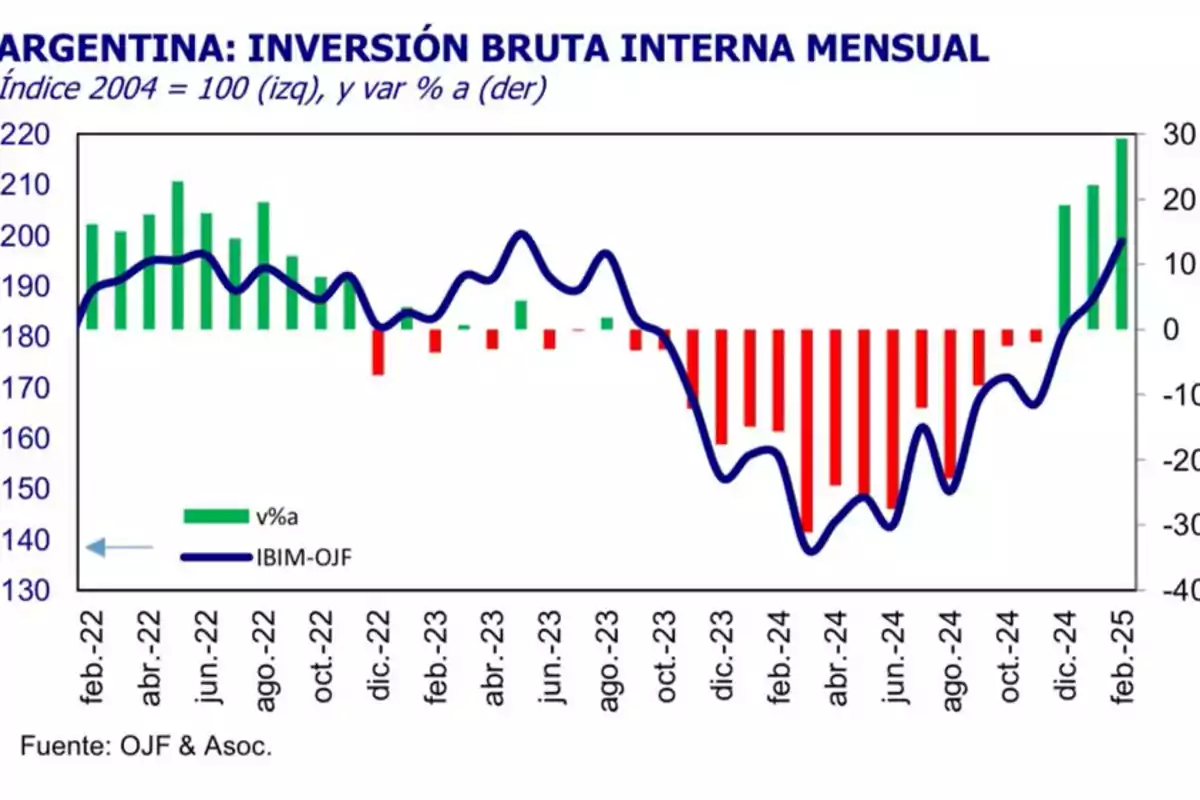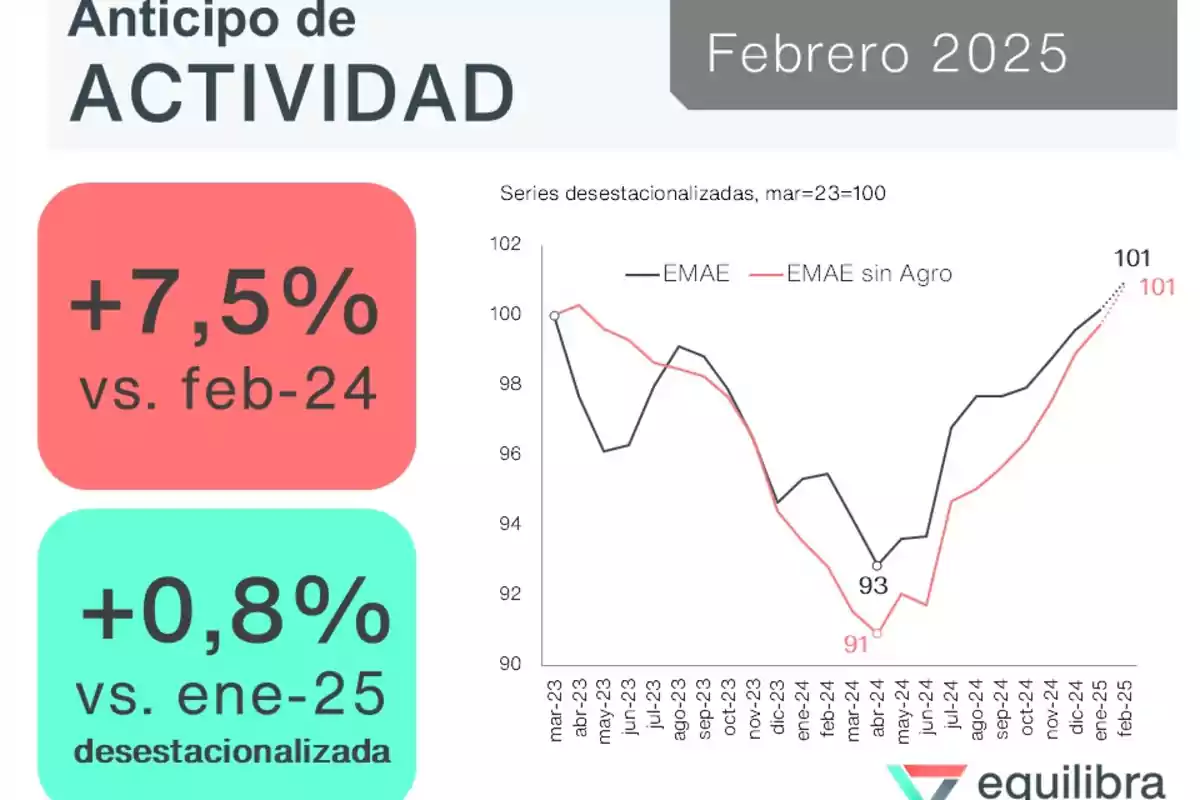
Argentina's economy grew by 7.5% annually in February, according to Equilibra's EMAE.
Equilibra anticipated in its media the increase in the country's economic activity in February, highlighting key sectors
According to the preview of the Monthly Economic Activity Estimator (EMAE) by Equilibra, economic activity experienced a year-on-year growth of 7.5% in February 2025. However, another more encouraging fact is that the activity also shows a real improvement in its contrasted measurement compared to February 2024.
February presented itself as a turning point where, in addition to the EMAE data, the inflation for the month was 2.4% and the year-on-year rate plummeted to 66.9%.
This strong rebound is partly explained by the low base of comparison with February 2024, when the economy was undergoing the initial adjustment of Javier Milei's government, a consequence of the crisis inherited from Kirchnerism.

Contrasting with February, the data for the month of January reflected by Equilibra indicated a 7% increase. The preview of the Monthly Economic Activity Estimator showed a year-on-year improvement in activity compared to the decline recorded in 2024. But it also recovers in its seasonally adjusted measurement, giving a 0.5% increase compared to December.
The momentum is not limited to agriculture, as if this sector is excluded, the EMAE reveals an even greater year-on-year growth of 7.3%, consolidating a positive trend after the 5.4% year-on-year increase recorded in November 2024. In monthly terms, the economy without agriculture grew 0.7% compared to December of last year, confirming that the recovery is widespread and sustained.
Meanwhile, the agricultural sector also showed a 2.5% year-on-year rebound in January, although its impact on the overall improvement of the EMAE was more moderate, contributing only 0.2 percentage points to the overall growth. This data highlights that the economic reactivation goes beyond the field and extends to other productive sectors.

Despite the slight drop in the GDP in 2024, which closed with a 1.8% annual contraction, the prospects for the following months of 2025 are extremely optimistic.
The recovery of agriculture after the drought drove a 31% growth in this sector, which cushioned the decline of the non-agricultural GDP (-4% annually). However, the most relevant aspect is the "high statistical carryover" left by the fourth quarter of 2024, with a positive effect of 2.6% on this year's economy.
More posts: